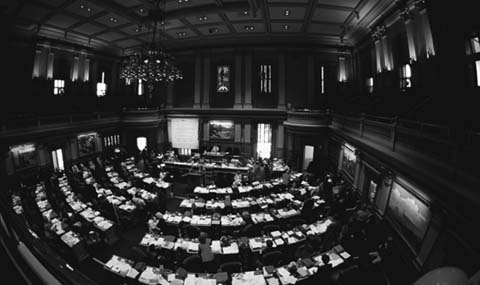The American system of federalism allows for strong local government that is distinct and separate from that practiced at both the federal and state levels. The result is a complicated web of intergovernmental relations, with certain powers authorized at each level, but there are also limitations. Powers at the local level are granted by the Constitution but how they are structured is not spelled out. The structure of local government can take a number of different forms, involving elected mayors, councils and appointed city managers. The purpose of this journal is to present an overview of democratic local government in the United States.
In this issue, Professor Ellis Katz of the Center for the Study of Federalism at Temple University examines how the ideas of self-government and federalism affect local government.

The Colorado State House of Representatives in session.
The mayor of Abilene, Texas, Gary D. McCaleb, discusses how communities need to work together to solve problems that often transcend borders.
David R. Berman, professor of political science at Arizona State University, explains how local and state governments use their powers to raise revenue.
The outgoing mayor of Kansas City, Missouri, Emanuel Cleaver II, and two former mayors, Gene Roberts, of Chattanooga, Tennesse, and Art Agnos, of San Francisco, California, hold a dialogue on how U.S. cities market themselves for economic development.
Bruce Adams, founder and president of A Greater Washington, an alliance of business and community leaders, writes on how local government has evolved over the past two centuries and suggests ways for communities to follow in the new millennium.
In profiling a city -- Atlanta, Georgia -- where diversity plays a major role, contributing editor David Pitts looks at how government and citizens continue the struggle to make it a city that works for everyone.